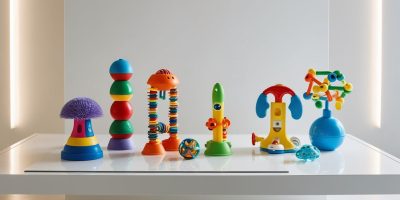When you think of STEM toys, you probably imagine older kids building robots or conducting science experiments. But here’s a surprising fact—STEM learning can start as early as infancy. Babies are naturally curious, constantly exploring cause-and-effect, spatial relationships, and sensory experiences. The right toys can nurture these early skills in fun, safe, and age-appropriate ways.
Below are some of the best STEM-friendly toys designed specifically for babies.
1. Soft Fabric Blocks with Patterns and Textures
Babies can stack, knock over, squeeze, and chew on these lightweight blocks while exploring patterns, colors, and textures. Early stacking introduces problem-solving and hand-eye coordination.
2. Shape Sorters for Fine Motor Development
Chunky, easy-to-hold shape sorters encourage babies to experiment with fitting shapes into matching slots. This simple activity lays the groundwork for spatial reasoning and problem-solving skills.
3. Baby-Safe Mirrors
Looking into a mirror encourages self-recognition and curiosity. Babies observe their own expressions and movements, sparking early scientific observation skills.
4. Cause-and-Effect Toys
Pop-up toys, ball drops, and push-button activities help babies understand that actions lead to predictable results—an essential scientific concept.
5. Musical Toys with Variable Sounds
Baby-safe xylophones, shakers, and drums let babies explore sound, rhythm, and cause-and-effect. Musical play also supports early math skills like pattern recognition.
Tips for Choosing STEM Toys for Babies:
- Always check for age-appropriate safety standards—no small parts, toxic paints, or sharp edges.
- Look for toys that can grow with your baby into toddlerhood for longer play value.
- Keep it simple—overly complex toys can be overwhelming at this stage.
By starting STEM play early, you’re not trying to make your baby “study science.” Instead, you’re feeding their natural curiosity, encouraging exploration, and laying the groundwork for future problem-solving skills—without them even knowing it.





